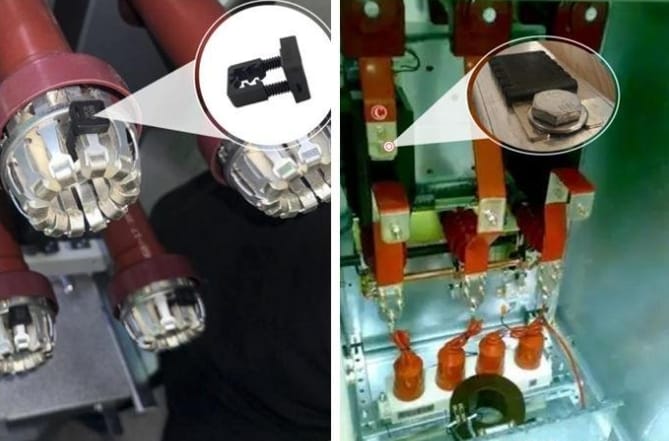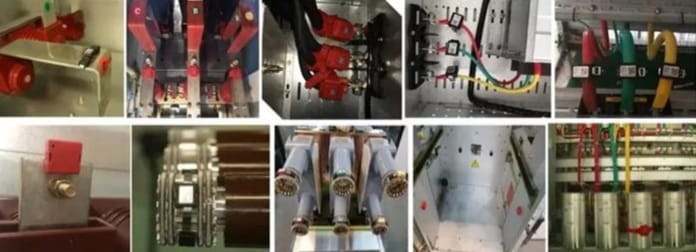RFID Technology: The New Power Tool for Electrical Temperature Monitoring
In the power industry, a critical component of national infrastructure, equipment safety and stability are paramount concerns. During operation, power equipment is subjected to harsh conditions including high voltage and high temperatures for extended periods, making it susceptible to failures. Therefore, temperature monitoring of power equipment is especially important. RFID temperature measurement technology plays a vital role in monitoring the temperature of power equipment.
How RFID Temperature Monitoring Solves Critical Power Industry Challenges
Taking power transmission and transformation equipment as examples, critical components such as transformers, middle cabinets, ring network cabinets, and low-voltage high-current circuit breakers can develop issues during long-term operation. These include equipment aging, surface oxidation, corrosion, and loosening of fastening bolts, leading to abnormal temperature rises at critical points. Additionally, many power devices operating under high loads for extended periods can easily experience temperature anomalies. Furthermore, improper installation and other factors may cause poor contact at connection points, increasing contact resistance and causing contact point temperature rises. By installing RFID temperature measurement devices on power equipment, temperature changes can be monitored in real-time, allowing for prompt detection of abnormal conditions.

Ultra-High Frequency RFID Technology for Passive Wireless Temperature Monitoring
The passive wireless temperature monitoring system based on ultra-high frequency RFID readers features temperature sensors that operate by collecting electromagnetic wave energy and wirelessly transmitting data back to receiving devices. By installing specially designed RFID temperature measurement equipment at critical locations on power equipment, sensors can detect temperature changes in real-time and transmit temperature data wirelessly to RFID readers. After receiving the data, the RFID reader can directly display it on-site and trigger alarms when temperatures reach preset thresholds. Alternatively, data can be uploaded to background management software for analysis and processing, achieving real-time temperature monitoring and early warning. The background management software supports both PC and mobile viewing, enabling alarms during abnormal situations to ensure maintenance personnel can promptly identify and address issues.

RFID Wireless Temperature Measurement for Smart Ring Network Cabinet Maintenance
As core distribution equipment in power systems, the electrical connection points inside ring network cabinets (such as cable terminals, busbars, and circuit breaker contacts) are prone to increased contact resistance due to oxidation, loosening, or dust accumulation during long-term high-load operation, leading to localized overheating. The bushing and cable terminal areas of ring network cabinets are high-risk zones where failures frequently occur. Temperature anomalies typically accompany these failures. Due to the high safety requirements of high-voltage components, compact structures, and limited space for sensor installation (with actual heating points located internally), traditional monitoring methods cannot meet these requirements.
By integrating ultra-low-power temperature sensors into RFID electronic tags, a wide monitoring range of -40°C to 150°C is supported. Using RFID anti-metal tags, they can be directly fixed to metal surfaces such as busbars and contacts, avoiding signal shielding issues while withstanding high-temperature environments up to 220°C. Powered by RF energy emitted from RFID readers, these battery-free sensors have a lifespan exceeding 10 years, making them suitable for long-term outdoor operation. RFID wireless temperature measurement technology, with its high precision and strong anti-interference characteristics, thoroughly solves the industry challenges of temperature monitoring in ring network cabinets. Its intelligent, low-cost maintenance model provides reliable assurance for power system safety and efficiency improvement, becoming a key technical support for smart grid construction.
RFID Wireless Temperature Measurement for Middle Cabinet Monitoring
In middle cabinets, the junction between moving contacts and busbars is often prone to temperature-related incidents. RFID wireless temperature measurement technology can monitor temperature changes in middle cabinets in real-time, ensuring their safe and stable operation. Additionally, RFID temperature measurement technology plays an important role in various scenarios, including generator bearing and rotating component temperature measurement, box transformer low-voltage circuit breaker and high-voltage cable terminal temperature measurement, transformer temperature measurement, and switchgear moving contact and busbar temperature measurement.
RFID Temperature Monitoring Solutions for Substation Equipment
As crucial nodes in power systems, temperature monitoring of substation equipment is significant for ensuring stable power system operation. By installing RFID temperature measurement devices on substation equipment, temperature changes can be monitored in real-time, allowing for early detection of potential equipment failures. Moreover, RFID temperature measurement technology enables remote monitoring of substation equipment, providing convenience for power system operation and maintenance.
RFID Technology for Cable Temperature Monitoring and Management
As an essential component of power transmission, cable operating temperature directly affects the stability and safety of power systems. By installing RFID temperature tags on cables, temperature changes can be monitored in real-time, effectively preventing fire accidents caused by cable overheating. Simultaneously, RFID temperature measurement technology enables comprehensive temperature monitoring of cables, providing important bases for power system fault diagnosis and repair.
With continuous technological advancement, RFID temperature measurement technology will provide stronger safeguards for the safe and stable operation of the power industry. It not only builds a solid defensive line for the safe operation of power equipment but also injects new vitality into smart grid construction.